Sichuan’s Alpine Wonderland: Jiuzhaigou National Park
Ronan O’Connell visits Jiuzhaigou National Park, an alternative to popular Zhangjiajie, and an alpine wonderland in Sichuan Province famed for its natural beauty.
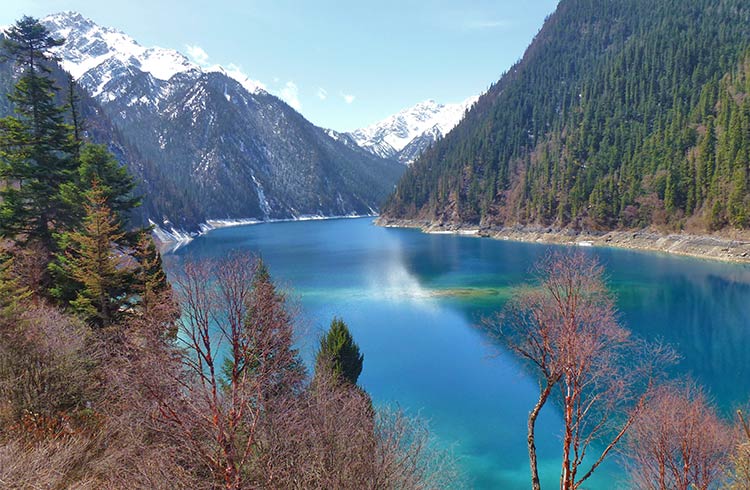 Photo © Ronan O'Connell
Photo © Ronan O'Connell
A Tibetan prayer wheel spins slowly in a breeze that’s drifted across a crystalline lake, down from a snowy mountain and through an alpine forest that’s home to giant pandas. Is this the famed Tian? For more than 2,000 years, the Chinese have puzzled over Tian (which translates to Heaven), one of the central concepts of Confucianism, and believed to be the place from where the world is controlled.
Examine Chinese art dating back millennia and you’ll see one thread running through it – the glorification of the country’s natural gifts; mountains, lakes, forests and rivers abound. Yet, for most travelers, expectations of China are dominated by thoughts of colossal cities, nests of skyscrapers, vast highways and crowds.
Many people are shocked when, after asking for advice on visiting China, I tell them to head to its national parks. None of these protected natural areas is more beautiful than Jiuzhaigou. This is my idea of Tian.
The 280mi (450km) bus trip here from Chengdu, the nearest major city, takes nearly 10 hours. The seats are cramped and the roads are bumpy. The scenery, however, grows increasingly spectacular the closer we come to Jiuzhaigou. When finally we arrive, the length and arduous nature of the trip heightens the sense that I am somewhere truly remote and untouched.
- A Fiercely Protected National Park
- Jiuzhaigou’s Unique Culture Survives
- Lakes, Waterfalls and Wildlife
- Nuorilang Waterfall
- A Truly Remote Destination in China
A Fiercely Protected National Park
Spread across 72,000ha, on the eastern edge of the Tibetan Plateau in Sichuan Province, Jiuzhaigou National Park boasts more than 100 lakes and waterfalls across three connected valleys. It is the most beautiful place I’ve seen in more than a dozen trips to China. It is one of the most visited national parks among Chinese visitors but is largely overlooked by foreign travelers who instead visit Zhangjiajie National Park, 750km southeast in Hunan Province.
Jiuzhaigou is a paradise which has been lost and found more than once. More than 2,000 years ago, Tibetan and Qiang tribespeople discovered this breathtaking valley with its pristine lakes, dramatic waterfalls, dense coniferous forest, limestone terraces, soaring mountains and a huge diversity of rare flora and fauna. They created an idyllic lifestyle, prospering off this fertile land.
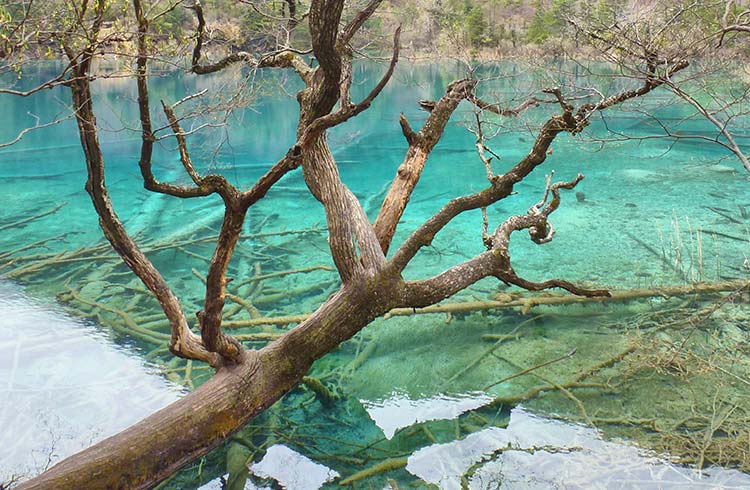
Then, in 1975, modernity encroached. This paradise was devastated by seven years of heavy logging. In 1982, Jiuzhaigou was saved from destruction when it became one of China’s first protected national parks. Strict environmental conservation was introduced, roads were built to accommodate a limited number of tour buses, and more than 31mi (50km) of wooden walkways were constructed to let visitors stroll the most scenic routes through the park.
Jiuzhaigou’s Unique Culture Survives
Jiuzhaigou’s cultural heritage has been safeguarded, too. About 1,000 Tibetan and Qiang people still live in nine villages across the park. These settlements are wonderfully authentic, decorated by rainbow-like clusters of Tibetan prayer flags, centered around small groups of wooden buildings, almost every inch of which are covered by complex, hand-painted Tibetan motifs.

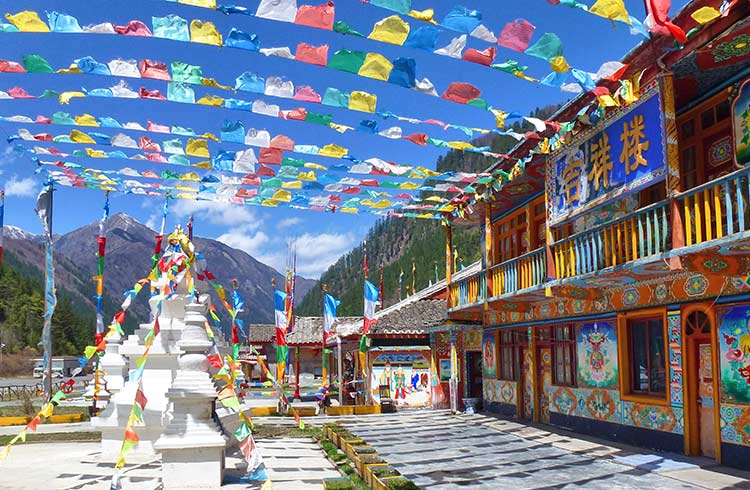
I learn just how friendly the locals when I leave the walkway for Shuzheng Village. I’ve hiked about 4mi (6.5km) along the scenic path entering the park’s main gate and am fascinated to explore the closest settlement to this entrance.

I encounter a group of children bouncing a ball. Fascinated by my relatively tall height, one girl asks me in broken English if I play basketball. I say that I do. She follows up with: “You know Yao Ming?”. When I nod, she runs off, yelling excitedly, clearly having misunderstood my reply, perhaps assuming the Chinese basketball star and I are close friends when I simply know of him.
Whether this miscommunication has offered me celebrity-by-association status, or the villagers are just really amiable, I’m ushered into a Tibetan home and gifted a VIP feast of barley wine and yak stew. After the meal, my host family ask their two daughters to perform for me. Wearing bright, intricately-embroidered dresses, they do a short dance which, I understand, is customary to welcome guests to a Tibetan home.
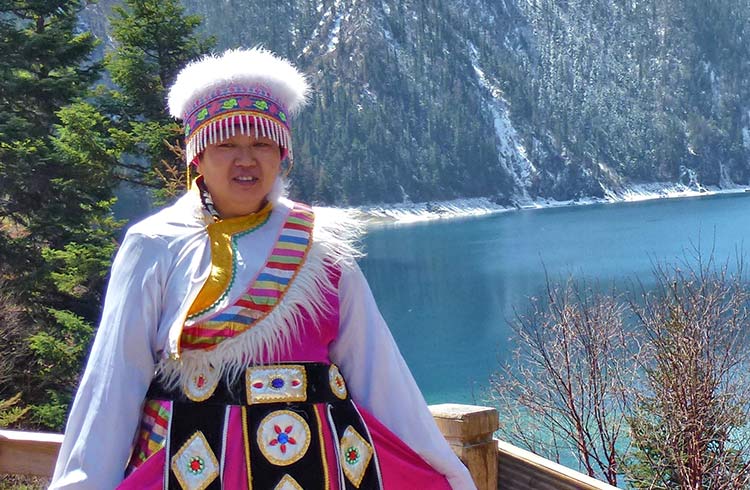
Lakes, Waterfalls and Wildlife
With a full belly, I wave the family goodbye and rejoin the walkway. It is a cold but sunny day in April. Spring is bringing Jiuzhaigou back to life after the harsh winter associated with an altitude that ranges between 6,500ft (2,000m) and 14,700ft (4,500m) across the park. The scenery I pass is majestic. The walkway weaving through lush, green forests and skirting a series of small lakes, with water so translucent it almost seems unreal. Yet, I still haven’t seen the park’s most famed sites.
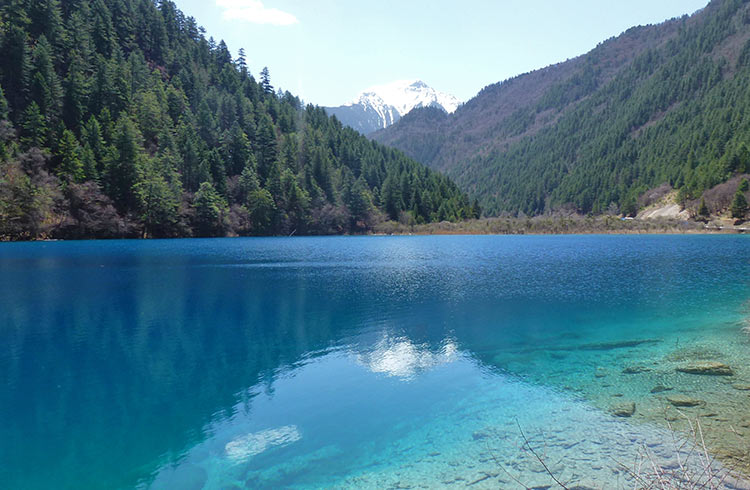
Less than a mile after leaving the village on foot I arrive at Reed Lake. This winding, aqua-blue body of water pierces a field of tall, brown reeds, creating enchanting contrast of color, shape and texture. I hike on and on and on. The walkway takes me along the edge of Sparkling Lake, Lying Dragon Lake and then to one of the largest lakes in the park, Shuzheng. I’m gobsmacked by the magnificence of Tiger, Rhinoceros and Mirror lakes, and Nuorilang waterfall.
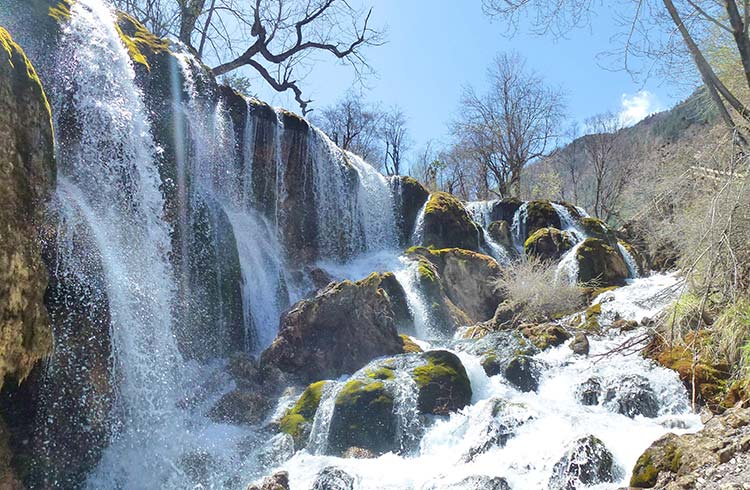
Nuorilang Waterfall
The latter halts me in my stride. Reputedly the world’s widest limestone waterfall, it is cloaked in vegetation. Water cascades from beneath the plants and over its precipice, creating a uniquely-dramatic spectacle. I sit on a bench next this natural wonder for half an hour and just stare. Meanwhile, birds are swooping over the waterfall – Jiuzhaigou is home to more than 200 bird species – and somewhere in the old-growth forests behind it, hide two endangered animals, the giant panda and the Sichuan takin, which looks like a cross between a goat and a moose.
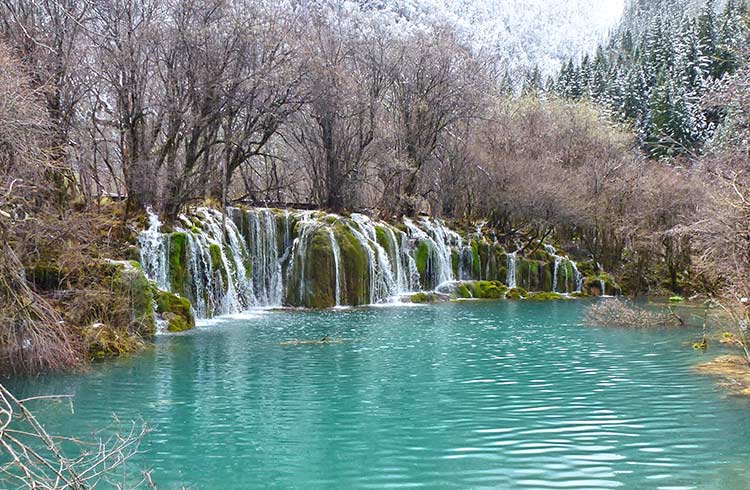
A Truly Remote Destination in China
During my two days following the scenic walkways, I hike more than 40mi (65km), while tour buses frequently whiz past me on the adjacent road. For a small fee, travelers can hop on and off these shuttles. Many Chinese visitors prefer being driven between each beauty spot to the lengthy walks involved. But it took me a long time to get to Jiuzhaigou, so I’m in no rush.
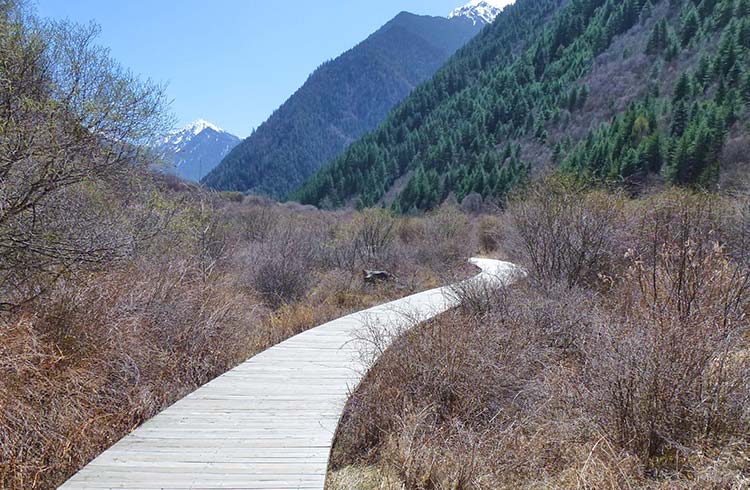
Three days later, with aching legs, I treat myself by ditching the 10-hour bus trip and instead taking the 45-minute flight back to Chengdu. I check out of my hotel – there are more than a dozen ranging from cheap to fancy in a small town next to the park’s entrance – and catch a 90-minute bus ride to Jiuzhai Huanglong Airport. As my plane ascends into the sky, I peer out the window to get a final glimpse of Jiuzhaigou. I’m in the heavens looking down at Heaven.
Related articles
Simple and flexible travel insurance
You can buy at home or while traveling, and claim online from anywhere in the world. With 150+ adventure activities covered and 24/7 emergency assistance.
Get a quote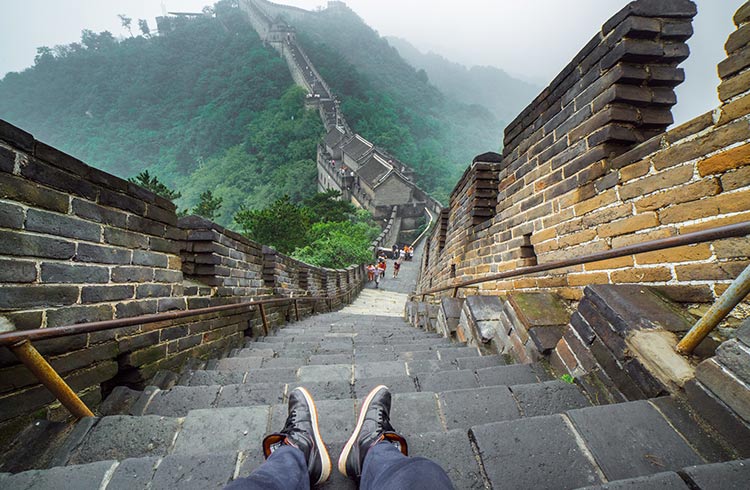
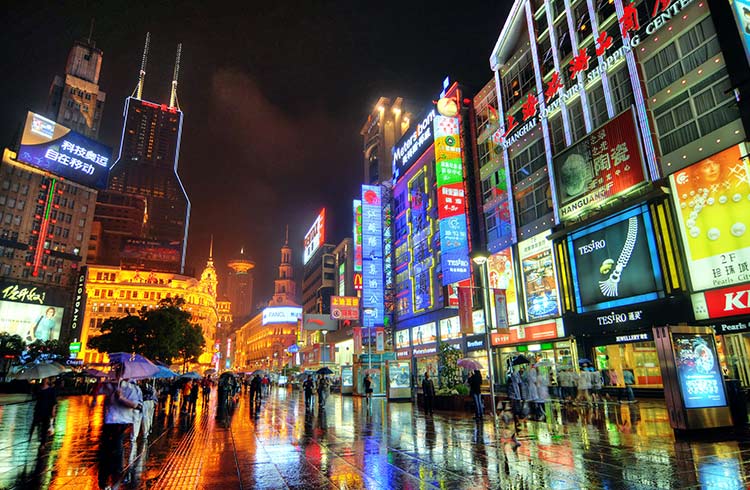
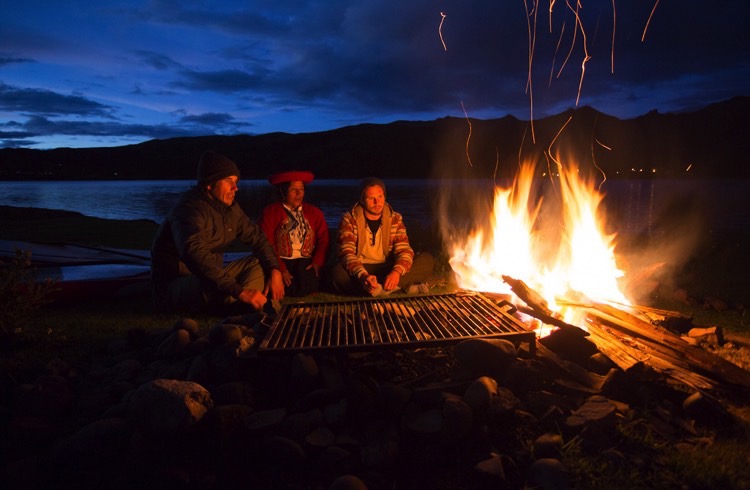
No Comments